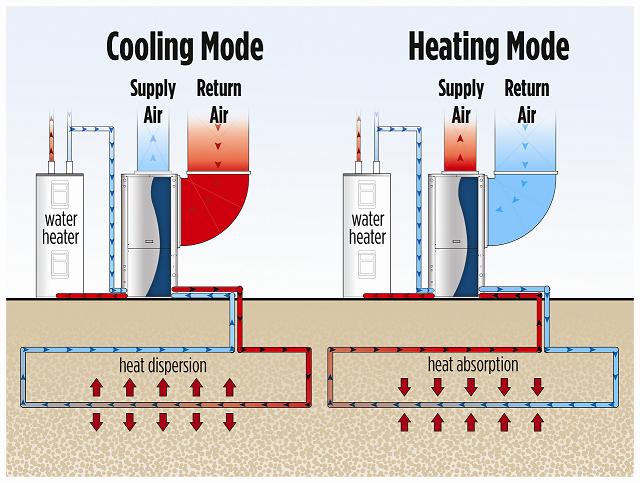We have you covered when it comes to installing heat exchange ground source looping systems for geothermal projects.
Geothermal heat pumps typically use 25% to 50% less energy than conventional heating or cooling systems.

During the summer, the geothermal system absorbs heat from inside your home and sends it underground to the looping field where it is absorbed by the cooler ground. The cooled water returns indoors where it cools the air throughout your home.
During the winter, the geothermal system absorbs the heat stored underground by sending water out through the geothermal looping field then circulating it back to the furnace where it’s concentrated and then sent as warm, comfortable air throughout the home.
The biggest benefit of Geothermal Heat Pumps is they typically use up to 50% less electricity than conventional heating and cooling systems. According to the EPA, geothermal heat pumps can reduce energy consumption and emissions up to 44% compared to air-source heat pumps.
The hardware associated with geothermal requires less space in the home than a conventional HVAC system, freeing up room for other things. For instance, geothermal heat pumps have no outside condensing units like air conditioners, so there’s no noise outside the home. It’s so quiet inside the home, you generally can’t even tell it’s running.
It all depends on the type of looping system installed. Vertical loops require less land, often as little as a tenth of an acre. Meanwhile, horizontal loops require more land, and may need as much as 2-3 acres.
Where space is limited, a VERTICAL LOOP is the best solution. We will drill boreholes 150 to 400 feet deep so the piping loop can be installed. When space allows, a HORIZONTAL LOOP is another solution in which the sealed piping is buried in trenches between 3 to 6 feet deep.
Horizontal ground loops are typically the most economical and used on new construction if land is plentiful. Meanwhile, vertical loops minimize the impact on landscape and are often used in areas where space is limited.
There are several factors which need to be considered before you decide on a geothermal heating system. You’ll need to look at the composition of your soil and rock, the land availability, and the hydrology. Things such as landscaping, underground utilities and even sprinkler system placement can also contribute to the design. We will send a geothermal design specialist to your site to examine your geology and hydrology parameters. Contact us today!
